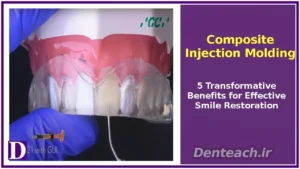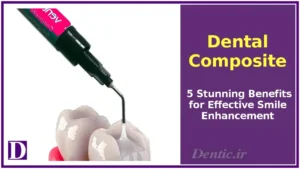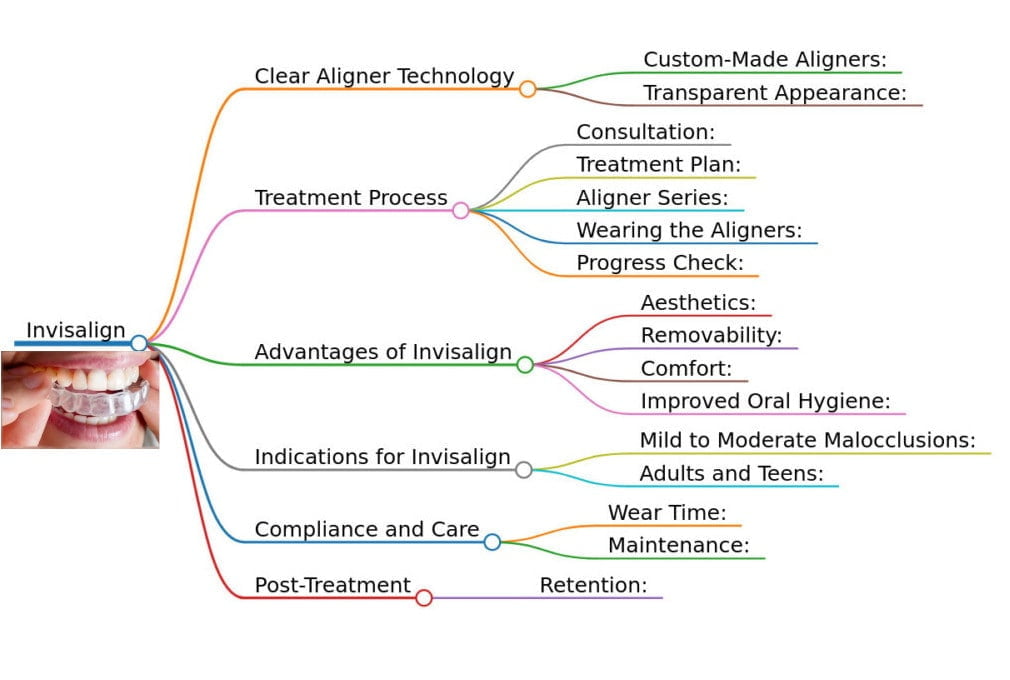
Table of Contents


Composite Injection Molding: 5 Transformative Benefits for Effective Smile Restoration

Dental Composite: 5 Stunning Benefits for Effective Smile Enhancement

Teeth Bleaching: 5 Radiant Benefits for Effective Smile Brightening

Dental Veneer: 5 Stunning Benefits for Effective Smile Enhancement

Implant-Supported Fixed Prostheses: 5 Advanced Benefits for Effective Smile Restoration

Invisalign: Transforming Smiles with Discreet Orthodontic Innovation
Invisalign is a revolutionary orthodontic treatment that uses clear, removable aligners to straighten teeth and correct bite issues, offering a discreet alternative to traditional metal braces. By leveraging advanced digital technology and custom-molded aligners, Invisalign addresses mild to moderate malocclusions, enhancing aesthetics and oral health. With over 14 million patients treated globally, according to Align Technology, Invisalign is a popular choice for teens and adults seeking a confident smile without the visibility of braces. This article explores the definition, technology, treatment process, indications, benefits, aftercare, challenges, and future trends of Invisalign, highlighting its role in modern orthodontics.
Defining Invisalign
Invisalign is an orthodontic system that uses a series of clear, removable plastic aligners to gradually reposition teeth and correct malocclusions, such as crowded teeth, gaps, or bite irregularities. Unlike traditional braces with brackets and wires, Invisalign aligners are virtually invisible, made from smooth, biocompatible polyurethane plastic. Designed for patient comfort and convenience, Invisalign is ideal for aesthetic-conscious individuals, addressing cosmetic and functional concerns while maintaining oral hygiene. With success rates comparable to braces (85–90% for suitable cases), Invisalign combines cutting-edge technology with personalized treatment plans to deliver radiant, healthy smiles.
Clear Aligner Technology
Invisalign’s technology is rooted in precision and customization:
- Custom-Made Aligners: Each aligner is crafted using 3D digital scans or impressions of the patient’s teeth, ensuring a precise fit. Align Technology’s proprietary SmartTrack® material provides flexibility and controlled force for effective tooth movement.
- Transparent Appearance: Aligners are nearly invisible, blending seamlessly with natural teeth, making them ideal for professional or social settings.
- Digital Planning: Advanced software, such as ClinCheck®, maps the entire treatment journey, allowing patients to visualize tooth movement from start to finish.
Indications for Invisalign
Invisalign is suitable for various orthodontic conditions:
- Mild to Moderate Malocclusions: Corrects crowded teeth, gaps, overbites, underbites, crossbites, and open bites.
- Aesthetic Concerns: Addresses crooked or uneven teeth impacting smile confidence.
- Functional Issues: Improves bite alignment for better chewing, speech, or jaw comfort.
- Teens and Adults: Ideal for patients aged 12 and older, including those seeking discreet treatment for professional or lifestyle reasons.
Invisalign is less effective for severe malocclusions or complex jaw discrepancies, which may require traditional braces or surgery.
The Invisalign Treatment Process
The Invisalign journey is a structured, patient-focused process:
- Consultation: An orthodontist evaluates oral health using digital scans (e.g., iTero® scanner), X-rays, and bite analysis to determine suitability and discuss goals.
- Treatment Planning: A customized digital plan is created using ClinCheck® software, mapping tooth movements and estimating treatment duration (6–24 months).
- Aligner Fabrication: A series of custom aligners (10–50, depending on the case) is produced, each designed to shift teeth incrementally.
- Wearing Aligners: Patients wear each aligner set for 1–2 weeks, 20–22 hours daily, removing them only for eating, drinking (except water), brushing, and flossing.
- Progress Check: Check-ups every 6–8 weeks monitor progress, provide new aligners, and address concerns.
- Retention: Post-treatment, Vivera® retainers or similar devices are prescribed to maintain alignment, typically worn nightly.
Benefits of Invisalign
Invisalign offers significant advantages:
- Aesthetics: Nearly invisible aligners enhance confidence during treatment, ideal for social or professional settings.
- Removability: Aligners can be removed for eating, allowing unrestricted diets compared to braces.
- Comfort: Smooth plastic eliminates irritation from metal brackets or wires, with minimal discomfort reported by 80% of patients.
- Improved Hygiene: Removable aligners facilitate brushing and flossing, reducing risks of decay or gum disease.
- Predictable Outcomes: Digital planning ensures precise, visualized results, with success rates of 85–90% for eligible cases.
Compliance and Care
Successful Invisalign treatment requires commitment:
- Wear Time: Aligners must be worn 20–22 hours daily to achieve planned tooth movement. Non-compliance can extend treatment or reduce effectiveness.
- Cleaning Aligners: Rinse aligners with lukewarm water and brush gently with a soft toothbrush to prevent discoloration or odor. Avoid hot water to prevent warping.
- Oral Hygiene: Brush and floss after meals before reinserting aligners to maintain oral health.
- Storage: Store aligners in their case when not in use to avoid loss or damage.
Post-Treatment Care
Maintaining results post-Invisalign is critical:
- Retainer Use: Wear retainers as prescribed (full-time initially, then nightly) to prevent relapse, which occurs in 20–50% of cases without retention.
- Regular Check-Ups: Visit the orthodontist or dentist every 6–12 months to monitor alignment and retainer condition.
- Avoid Staining Agents: Limit coffee, tea, or red wine to preserve aligner and tooth aesthetics.
- Healthy Diet: Reduce sugary foods to minimize decay risks around teeth.
Challenges and Considerations
Challenges include:
- Cost: Invisalign costs $3,000–$8,000 in the U.S., similar to braces, though insurance may cover part of the expense.
- Compliance: Requires discipline to wear aligners consistently; non-compliance affects 10–15% of patients, delaying results.
- Limitations: Less effective for severe malocclusions or complex jaw issues, requiring alternative treatments.
- Temporary Adjustments: Speech or saliva production may be affected initially, resolving within 1–2 weeks.
- Maintenance: Aligners require regular cleaning, and replacements (if lost) add costs.
Future Trends
Invisalign continues to evolve:
- Advanced Digital Tools: AI-driven ClinCheck® and 3D printing enhance treatment precision and aligner production.
- SmartTrack® Innovations: Next-generation materials improve comfort and force application.
- Accelerated Treatment: Adjuncts like AcceleDent® or Propel® reduce treatment time by 20–40%.
- Expanded Indications: Ongoing research extends Invisalign’s applicability to more complex cases.
Conclusion
Invisalign transforms smiles with discreet, comfortable, and effective clear aligners, offering a modern alternative to traditional braces. By addressing mild to moderate malocclusions, it enhances aesthetics, function, and oral health for teens and adults. With proper compliance, aftercare, and advancements in digital orthodontics, Invisalign delivers predictable, lasting results. Patients seeking a straighter smile should consult a certified orthodontist or visit Invisalign Official Website for personalized treatment options.
- Align Technology. (2025). What is Invisalign?
- American Association of Orthodontists. (2025). Orthodontic Treatment Options.
- Proffit, W. R., et al. (2018). Contemporary Orthodontics. American Journal of Orthodontics and Dentofacial Orthopedics, 154(2), 165–172.
- American Dental Association. (2025). Orthodontics.
